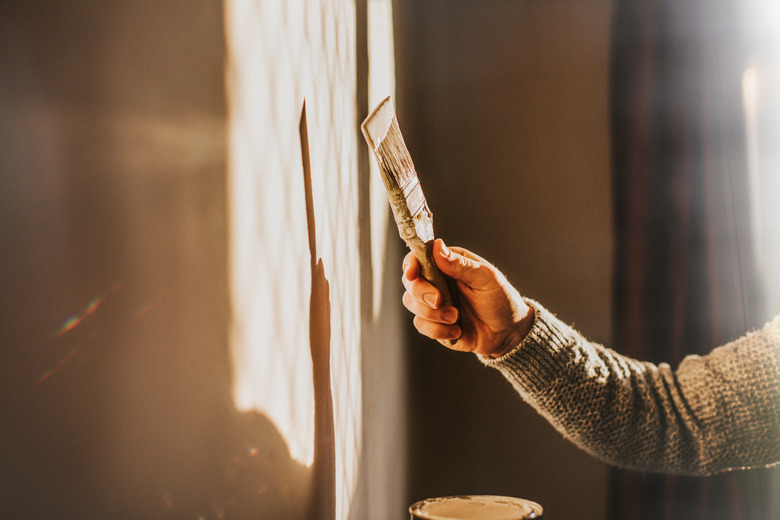How To Apply Polyurethane Over Paint
Applying one or two coats of polyurethane to a painted surface is a good way to protect the paint. Use a water-based product if you're concerned about color because it won't yellow as much as an oil-based one. Oil-based polyurethane levels out to a smoother finish, although it takes several hours longer to dry. You can apply polyurethane over any type of paint, as long as the painted surface is clean and has been properly prepared.
Tip
If you're coating fresh paint, allow the paint to cure first. Curing times vary according to paint type and atmospheric conditions, but a safe average is about a week.
1. Wash the Painted Surface
1. Wash the Painted Surface
If the paint isn't fresh, wash off grease or stains with a strong detergent solution. Mix 1/2 cup of trisodium phosphate (TSP) with a gallon of warm water and scrub with a sponge or rag. This deglosses the finish as well as cleans it, providing for better polyurethane adhesion.
2. Scuff the Surface
2. Scuff the Surface
Let the paint dry, then scuff with 120-grit sandpaper to etch the surface. The goal is to slightly flatten the sheen without producing deep scratches that might be visible under the polyurethane. You can do it by hand, or use a palm sander. If you're applying polyurethane to a painted floor, scuff the floor with a floor buffer and a 120-grit sanding screen. Wipe the sanding dust away with a damp rag or tack cloth.
3. Choose Your Applicator
3. Choose Your Applicator
Apply oil- or water-based polyurethane with a brush or a paint sprayer. Do not use a roller, which leaves bubbles that may harden into the finish. Do not thin the polyurethane before spraying it — it's thin enough to spray out of the can, and adding more thinner may cause it to run.
Tip
- If you choose to brush the polyurethane, choose a direction and keep brushing in that direction. If the wood grain is visible, brush in the direction of the grain.
- If you're applying polyurethane to a painted floor, you can also use a floor finish applicator, which is a pad or weighted tube that you drag over the floor.
- When using a brush or applicator, use slow, deliberate movements to prevent bubbles. If you see a bubble, flatten it immediately with the tip of a paintbrush.
4. Apply One Coat, Then Scuff
4. Apply One Coat, Then Scuff
Let the first coat dry for the time recommended on the container, then scuff it lightly with 120-grit sandpaper. Scuffing removes small dust particles as well as flattening any bubbles that hardened into the finish.
5. Apply a Second Coat
5. Apply a Second Coat
You shouldn't need any more than two coats. Let the final coat dry for the recommended time, then give it an extra 24 hours to harden before walking on or handling the object you painted.
Tip
If bubbles or brush marks are a recurrent problem when applying polyurethane with a brush or floor applicator, add 20 percent to 25 percent solvent to the polyurethane to help it flow out. Because the mixture is thinner, you may want to apply an extra coat.
